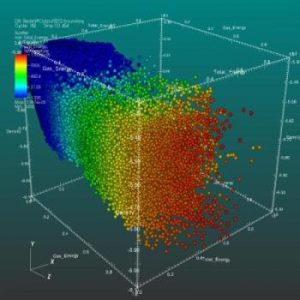Ever since social media outlets have allowed developers to create visual representations of a person’s social network, network diagrams have become an extremely popular way of presenting information. With users of Facebook and LinkedIn able to use third-party tools to visualize their entire network of connections, the tools can mathematically group and correlate relationships to highlight the mutual connections.
 The paper from SAS Support provides step-by-step instructions for building network diagrams using SAS Visual Analytics Explorer. Discussion also revolves around the usefulness of network diagrams in the real world.
The paper from SAS Support provides step-by-step instructions for building network diagrams using SAS Visual Analytics Explorer. Discussion also revolves around the usefulness of network diagrams in the real world.
An example of this can be found within the banking industry, specifically anti-money laundering. Obviously, it is important for financial institutions to understand exposure and risk when sending and receiving foreign wires. Visualizations can be very useful here in starting an analysis with network diagrams.
The source data in this scenario lends itself well to ungrouped or hierarchical network diagrams. However, this particular example utilizes a hierarchical approach so as to demonstrate the ability to filter on nodes. Using the lowest possible grain of data – transaction level – is difficult, but a high level example of the visualized data shows the power of being able to visualize an entire population of values as they relate to each other. In this scenario, instead of simply guessing which country to focus on, a network diagram shows the analyst which countries should be focused on first.
By focusing efforts and ‘digging down’ further into the data from the high level visualizations, analysts can quickly sort out which areas require further analysis. Heatmaps, or correlation matrixes, can then be employed to provide additional analysis of variables within the data. Simple table listings can only provide the individual and specific transaction details, so this level of analysis is immediately useful.
Network diagrams, then, can be a great way to find the proverbial ‘needle in a haystack.’ Rather than picking a random subset to analyze, all the data can be shown in an easy and simple to understand format. This prevents ‘blind alleys’ and allows the user to make informed decisions on the direction of his or her analysis.
Big Data and related technologies – from data warehousing to analytics and business intelligence (BI) – are transforming the business world. Big Data is not simply big: Gartner defines it as “high-volume, high-velocity and high-variety information assets.” Managing these assets to generate the fourth “V” – value – is a challenge. Many excellent solutions are on the market, but they must be matched to specific needs. At GRT Corporation our focus is on providing value to the business customer.
How PowerLink Provides a Holistic View of Your Electric Assets
Through electrical signature analysis (ESA), GRT PowerLink performs careful electric asset health monitoring,...



